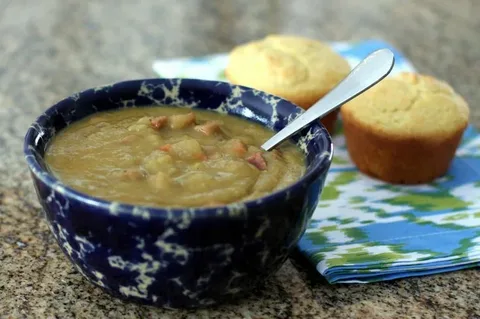In this article, we’ll explore the origins of porcupine soup, dive into the cultural context, and share insights into how this unusual dish is prepared. If you’re curious about trying it yourself or just want to learn more about exotic foods, you’re in the right place.
What Is Porcupine Soup?

Porcupine soup is a traditional dish made from the meat of the porcupine, a rodent known for its distinctive quills. This soup has a long history, particularly in Asian countries like China, where porcupine meat is valued not only for its unique taste but also for its purported medicinal properties. In these cultures, porcupine soup is believed to have benefits such as boosting immunity, aiding digestion, and even promoting recovery from certain illnesses.
The meat is often described as tender and slightly sweet, with a flavour similar to that of other game meats. Due to its distinctive taste and texture, porcupine soup is considered a delicacy in many rural areas, where it is prepared using traditional methods that have been passed down through generations.
How Is Porcupine Soup Made?
The preparation of porcupine soup can vary widely depending on regional preferences and available ingredients. However, the basic process involves a few key steps:
- Preparation of the Meat: Before cooking, the porcupine is usually carefully skinned, and the quills are removed. The meat is then cleaned and cut into pieces, often marinated to tenderize it and enhance the flavour.
- Cooking the Meat: The porcupine meat is typically boiled to soften it. Many recipes call for slow cooking to allow the flavours to develop fully. Common additions include ginger, garlic, and various herbs that complement the meat’s flavour.
- Adding Vegetables and Herbs: Vegetables like carrots, onions, and mushrooms are often added to the soup, along with traditional herbs known for their health benefits. In some recipes, medicinal herbs are included to enhance the soup’s healing properties.
- Seasoning and Simmering: The soup is then seasoned with salt, pepper, and sometimes soy sauce or other local spices. It’s simmered for several hours until the meat is tender and the flavours have melded together.
Cultural Significance of Porcupine Soup
Porcupine soup holds a special place in the culinary traditions of communities that value natural and traditional healing methods. For many, it’s not just a meal but a way to connect with their heritage and promote wellness. In some cultures, porcupine meat is believed to have warming properties, making it particularly popular during colder months when it’s thought to help maintain body heat and boost overall health.
Furthermore, porcupine soup is often prepared for special occasions, such as family gatherings or festivals, where it’s shared among loved ones as a symbol of unity and tradition. For these communities, making and enjoying porcupine soup is more than just eating—it’s a way of preserving culture and passing on age-old knowledge to younger generations.
Is Porcupine Soup Safe to Eat?

While porcupine soup is considered safe to eat when prepared properly, it’s important to remember that, as with any wild game, proper handling and cooking are essential to avoid potential health risks. Here are some tips for ensuring safety when preparing and eating porcupine soup:
- Proper Cleaning: Make sure to clean the meat thoroughly and remove all quills before cooking.
- Fully Cook the Meat: Wild game meats should be cooked thoroughly to eliminate any harmful bacteria or parasites that could be present.
- Source the Meat Responsibly: If you’re interested in trying porcupine soup, make sure to source the meat from a reputable provider or ensure that it’s hunted legally and ethically.
FAQs About Porcupine Soup
1. What does porcupine meat taste like?
Porcupine meat is often described as tender with a slightly sweet flavor, similar to other types of game meat like rabbit or squirrel.
2. Are there health benefits to eating porcupine soup?
In traditional medicine, porcupine soup is believed to aid digestion, boost immunity, and provide other health benefits, though these claims are based on anecdotal evidence.
3. Is it legal to eat porcupine in the US?
In the US, hunting regulations for porcupines vary by state. It’s essential to check local laws regarding hunting and consumption of wild game.
4. Can you buy porcupine meat commercially?
Porcupine meat is not commonly found in grocery stores and is generally sourced through hunting. Always ensure that the meat is obtained ethically and legally.
5. How long does it take to cook porcupine soup?
It depends on the recipe, but most porcupine soups require several hours of simmering to achieve a tender texture and well-developed flavor.
Final Thoughts on Porcupine Soup
Porcupine soup might not be a staple in the average American diet, but it holds a unique place in certain cultural traditions. For those who are adventurous eaters or curious about global cuisines, trying porcupine soup can offer a window into the world of traditional healing foods and indigenous culinary practices. Just remember to approach it with respect for the traditions it represents and ensure it’s prepared safely.
So, if you’re ever presented with the opportunity to try porcupine soup, you now have a deeper understanding of what makes it special. From its preparation to its cultural significance, porcupine soup is a fascinating dish that brings together flavor, tradition, and a touch of adventure.





